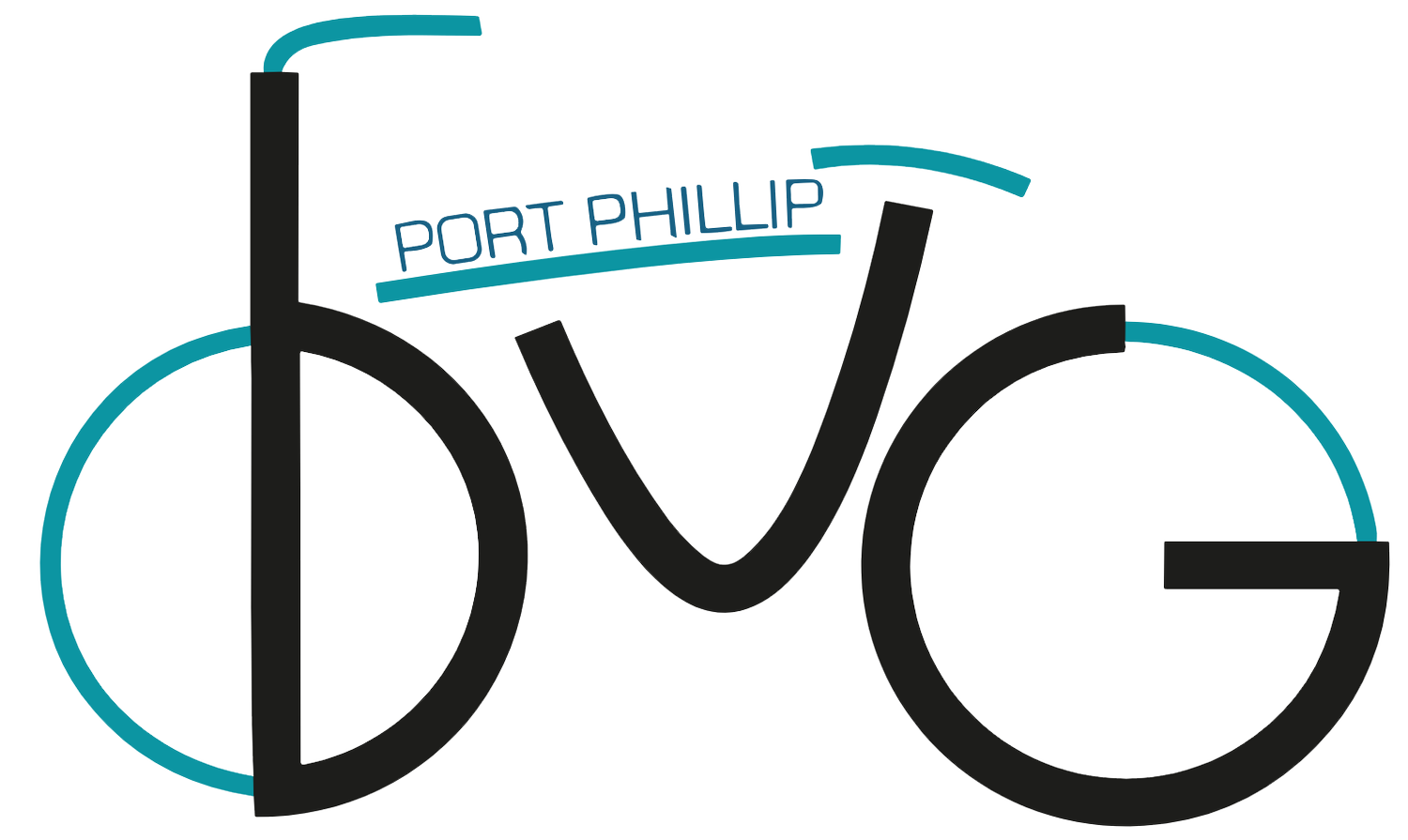Inkerman St is one of the routes identified in the City of Port Phillip’s Integrated Transport Strategy to be prioritised for protected safe cycling. It is also classified by the Victorian government as a strategic cycling corridor.
In May 2021 Port Phillip council officers prepared an update on the Inkerman Safe Travel Corridor. Inkerman St between Orrong Rd and Fitzroy St was identifed as the highest priority bike corridor for council delivery.
Factors influencing this include:
As a connector between the (soon-to-be-completed) St Kilda Rd separated bike lanes and Caulfield station/ Monash Caulfield/the Djerring trail (under the skyrail on the Dandenong line), this is of high strategic value
This street has a poor safety record, with 50 crashes recorded in the 5 years to 2019, 16 involving bike riders and 17 involving pedestrians.
The existing narrow painted bike lanes do not mitigate the safety risks to bike riders.
Usage of the corridor by people on bikes is high and increasing.
OPtions for the safe cycling corridor
This report presented three options for improvement. (A fourth option, a bi-directional path on one side of the road, was not pursued due to low safety benefits.) The italicised text and images following are from the report.
Option 1: Wide protected bike lanes with parking on one side of the street
Option 1 separates the bike lane from parked cars with metre wide islands at kerb height that provide a place for passengers to enter or exit a parked vehicle. This is the safest option for all users. Inkerman Street is wide enough so that, with the removal of the central median, the bike corridor can be included without reducing the number of cars that can drive on the road.
Option 1 will require 124 of 189 parking spaces to be removed.
Option 1 is the safest option for bike riders and Council officers recommend developing a concept for this option.
Option 1 is the preferred option for keeping the street open for everyone to use: people on bikes, scooters, and e-bikes, travelling at different speeds, can easily share the bike lane. By making the protected lanes attractive for all these users, it also keeps the traffic lane free for faster-moving (40km/hr) vehicles.
Option 2: Narrow kerbside bike lanes with parking on both sides of the street.
Option 2, like Option 1 is a kerbside bike corridor with a protective kerb. Option 2 retains more parking by reducing the width of traffic and bike lanes. This will limit areas where faster riders (including e-bikes and e-scooters) can overtake to breaks in the separator kerb including areas where there is no parking, at intersections, or they may ride in the traffic.
While Option 2 retains parking on both sides of the road, about 46 parking spaces will be removed adjacent to driveways to provide sightlines between drivers and bike riders. In addition, up to 20 spaces will be removed to support turning movements and avoid reducing intersection capacity.
Option 3: Painted buffers without a physical barrier.
The third option uses painted buffers rather than a physical barrier (low kerbs). While bike lanes with painted buffers on both sides are safer than the current painted bike lane, they do not provide a physical barrier between moving or parked cars and people riding bikes.
City of Melbourne surveys found that 22% of respondents would be confident to ride on typical bike lanes painted on roads, 46% of would aim to ride if double buffered bike lanes were provided while 86% of respondents would ride in protected bike lanes.
Buffered bike lanes require a maximum of 50 parking spaces to be removed to improve sightlines at driveways and intersections.
What about the glen eira section?
Inkerman St is in the City of Port Phillip up to Hotham St. Between Hotham and Orrong Rd it is shared between the City of Port Phillip (north) and the City of Glen Eira (south). East of Orrong it is in Glen Eira (and then named Inkerman Rd).
The City of Glen Eira’s transport strategy has a target of 50% of all trips to be taken by non-car transport by 2031. However this is purely aspirational, with few actions to support it. The main action for cycling was to “Plan and design a pilot cycle corridor improvement project with a protected cycleway to encourage an increase in cycling.” The location chosen for this corridor was Inkerman Rd, which shares the same strategic benefits as the connecting Inkerman St.
Anti-bike lane campaign Starting in 2019, there was a concerted anti-bike lane campaign by some residents of Inkerman Rd. Key concerns were safety and loss of parking (as well some other expressed concerns such as people from outside the area using “their” street). The campaign was very heated, with councillors requesting that they not be harassed by people opposing the bike lanes.
In November 2022 Glen Eira Council officers released a massive report (over 500 pages) on the Inkerman Safe Cycling Corridor Trial. They recommended a bi-directional bike lane on one side of the road. (This was probably due to it requiring fewer car park removals, despite this lay out being identified by Port Phillip as having lower safety benefits for bike riders).
On 22 November, the Council carried a motion that Council “Ceases all work on the project and no longer proceeds to community consultation”. The motion was carried 5/4 with the support of Crs Esakoff, Magee, Cade, Parasol and Zmood.
Current situation
While the eastern section in Glen Eira is a lost cause with the existing Glen Eira Council members, in Port Phillip between Hotham and Fitzroy St we can still choose to make a street that is open for everyone to use.
As of writing (March 2023) we are waiting for the Port Phillip Council to consider the concept designs prepared by Council officers. After that, it will go out to community consultation.





